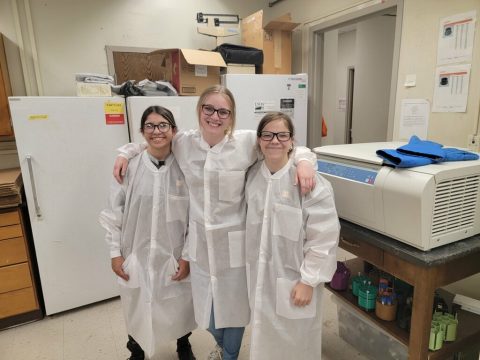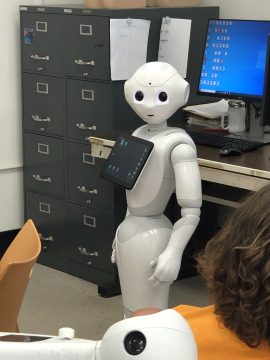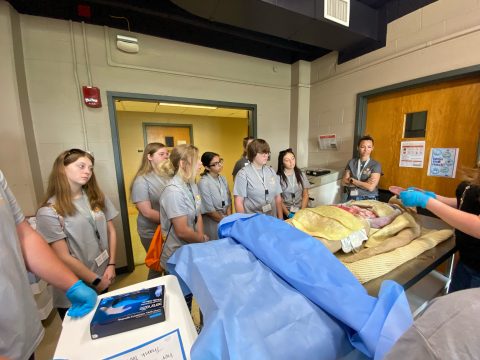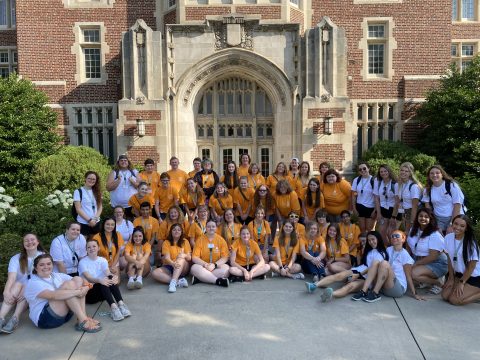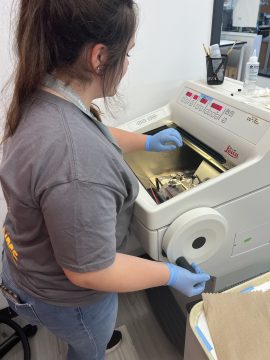Imagining Possibilities in Post-Secondary Education and STEMM in Rural Appalachia
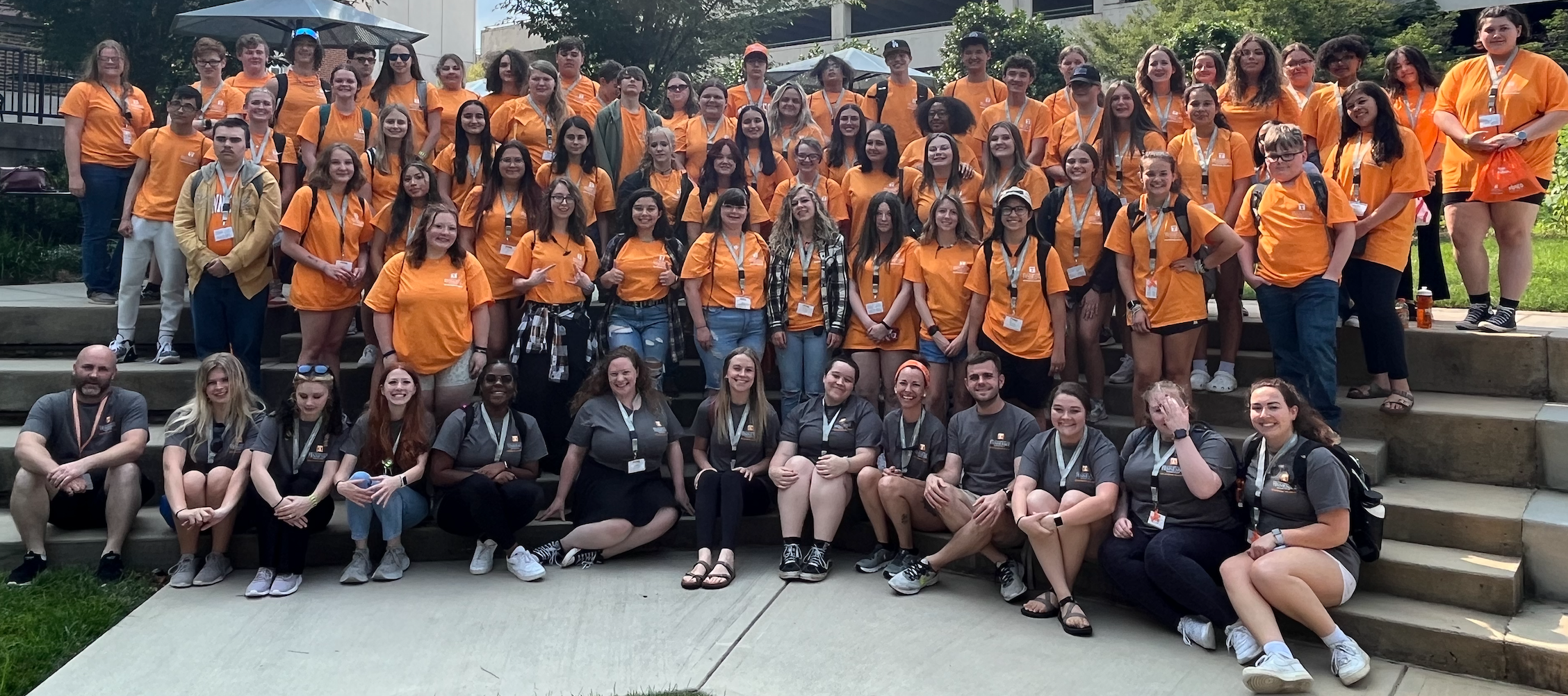
Project Website(s)
-
Project Description
Imagining Possibilities aims to increase the number of rural Appalachian high school students choosing to pursue post-secondary education and enter a STEMM (science, technology, engineering, math, medical) field. Achieving this goal will help diversify the biomedical workforce and positively address healthcare disparities in rural Appalachia. Rural Appalachia is a medically underserved area whose residents experience significant healthcare disparities. Because of the insular nature of rural Appalachian communities, change from within is particularly important. Thus, attracting residents from these areas to the biomedical, behavioral, and clinical research workforce may be essential for reducing the critical health disparities in the region. However, we cannot assume that increasing science and math-related interest and skills will be sufficient to attract students from this region to these careers. Nationwide, high school graduates from low-income, low-minority, rural schools (which describes much of Appalachia) have the lowest college enrollment rate (44%; National Student Clearinghouse [NCS], 2015), suggesting barriers and supports related to higher education in general must be addressed in addition to barriers and supports related to STEMM related careers. Our long-range goal in this effort is to develop efficacious interventions that reduce these contextual barriers and increase supports for and interest in both post-secondary education in general and STEMM in particular among Appalachian youth. Our objective is to determine the extent to which such a multifaceted intervention strategy leads to increased intentions to pursue an undergraduate STEMM degree. Our hypothesis is that students who experience such interventions will show increases in these important intrapersonal social-cognitive factors and in their intentions to pursue a postsecondary degree compared to students not exposed to such interventions. Our specific aims are to 1) Increase science identity, as well as self-efficacy, outcome expectation beliefs, and interests related to college-going and STEMM; 2) Teach skills to help students navigate barriers and increase supports for pursuing post-secondary education and STEMM careers; and 3) Determine the additive effects of multiple program experiences on college-going and STEMM beliefs. We will use a closely-matched comparison group to compare students who receive the interventions with those who do not. Achieving these aims will provide concrete tools for schools across rural Appalachia, and perhaps other rural regions, to use to increase the number of their students equipped with the skillsets required to join the high-growth biomedical and clinical research industry workforce.
-
Abstract
Rural Appalachia is a medically underserved area whose residents experience significant healthcare disparities. Because of the insular nature of rural Appalachian communities, change from within is particularly important. Thus, attracting residents from these areas to the biomedical, behavioral, and clinical research workforce may be essential for reducing the critical health disparities in the region. However, we cannot assume that increasing science and math-related interest and skills will be sufficient to attract students from this region to these careers. Nationwide, high school graduates from low-income, low-minority, rural schools (which describes much of Appalachia) have the lowest college enrollment rate (44%; National Student Clearinghouse [NCS], 2015), suggesting barriers and supports related to higher education in general must be addressed in addition to barriers and supports related to science, technology, engineering, math, and medical science (STEMM) related careers. Our long-range goal in this effort is to develop efficacious interventions that reduce these contextual barriers and increase supports for and interest in both post-secondary education in general and STEMM in particular among Appalachian youth. Our objective is to determine the extent to which such a multifaceted intervention strategy leads to increased intentions to pursue an undergraduate STEMM degree. Our hypothesis is that students who experience such interventions will show increases in these important intrapersonal social-cognitive factors and in their intentions to pursue a postsecondary degree compared to students not exposed to such interventions. Our specific aims are to 1) Increase science identity, as well as self- efficacy, outcome expectation beliefs, and interests related to college-going and STEMM; 2) Teach skills to help students navigate barriers and increase supports for pursuing post-secondary education and STEMM careers; and 3) Determine the additive effects of multiple program experiences on college-going and STEMM beliefs. We will use a closely matched comparison group to compare students who receive the interventions with those who do not. Achieving these aims will provide concrete tools for schools across rural Appalachia, and perhaps other rural regions, to use to increase the number of their students equipped for careers in the biomedical and clinical research industry workforce.
-
Dissemination Strategies
We will share our results via peer-reviewed publications in high impact journals and present at national conferences. We will also provide information to our local community partners and use our website and SEPA to share our curricula.
-
Project Evaluation(s)
Project Photos
Project Audience
High school students in four partner schools in rural Appalachian Tennessee.
Subjects Addressed
We provide an in-school curriculum for all 9th and 10th graders that focuses on post-secondary and STEMM awareness and is delivered by near-peer mentors (college students). We also offer optional summer camp programs for interested students, hosted on our college campus. We also work with 11th grade science teachers to develop NGSS-aligned lab experiences and plan to create an optional online course for 12th graders who plan to enter a four-year college after graduation.
Associated SEPA Project(s)
-
PiPES: Possibilities in Postsecondary Education and Science for Rural Appalachian Youth
R25OD020231 : 05/13/2015 - 02/29/2020
Associated SEPA Publication(s)
-
Validation of the College Planning Behaviors Scale
Professional School Counseling
Cook K., Hardin E., Gibbons M., Johnson M., Peterson C., Taylor A., Murphy S.


